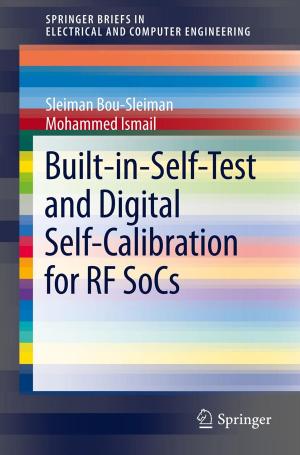Mapping Archaeological Landscapes from Space
Nonfiction, Science & Nature, Technology, Aeronautics & Astronautics, Social & Cultural Studies, Social Science, Archaeology, History| Author: | Michael J. Harrower, Douglas C Comer | ISBN: | 9781461460749 |
| Publisher: | Springer New York | Publication: | January 10, 2013 |
| Imprint: | Springer | Language: | English |
| Author: | Michael J. Harrower, Douglas C Comer |
| ISBN: | 9781461460749 |
| Publisher: | Springer New York |
| Publication: | January 10, 2013 |
| Imprint: | Springer |
| Language: | English |
Mapping Archaeological Landscapes from Space offers a concise overview of air and spaceborne imagery and related geospatial technologies tailored to the needs of archaeologists. Leading experts including scientists involved in NASA’s Space Archaeology program provide technical introductions to five sections:
-
Historic Air and Spaceborne Imagery
-
Multispectral and Hyperspectral Imagery
-
Synthetic Aperture Radar
-
Lidar
-
Archaeological Site Detection and Modeling
Each of these five sections includes two or more case study applications that have enriched understanding of archaeological landscapes in regions including the Near East, East Asia, Europe, Meso- and North America. Targeted to the needs of researchers and heritage managers as well as graduate and advanced undergraduate students, this volume conveys a basic technological sense of what is currently possible and, it is hoped, will inspire new pioneering applications.
Particular attention is paid to the tandem goals of research (understanding) and archaeological heritage management (preserving) the ancient past. The technologies and applications presented can be used to characterize environments, detect archaeological sites, model sites and settlement patterns and, more generally, reveal the dialectic landscape-scale dynamics among ancient peoples and their social and environmental surroundings. In light of contemporary economic development and resultant damage to and destruction of archaeological sites and landscapes, applications of air and spaceborne technologies in archaeology are of wide utility and promoting understanding of them is a particularly appropriate goal at the 40th anniversary of the World Heritage Convention.
Mapping Archaeological Landscapes from Space offers a concise overview of air and spaceborne imagery and related geospatial technologies tailored to the needs of archaeologists. Leading experts including scientists involved in NASA’s Space Archaeology program provide technical introductions to five sections:
-
Historic Air and Spaceborne Imagery
-
Multispectral and Hyperspectral Imagery
-
Synthetic Aperture Radar
-
Lidar
-
Archaeological Site Detection and Modeling
Each of these five sections includes two or more case study applications that have enriched understanding of archaeological landscapes in regions including the Near East, East Asia, Europe, Meso- and North America. Targeted to the needs of researchers and heritage managers as well as graduate and advanced undergraduate students, this volume conveys a basic technological sense of what is currently possible and, it is hoped, will inspire new pioneering applications.
Particular attention is paid to the tandem goals of research (understanding) and archaeological heritage management (preserving) the ancient past. The technologies and applications presented can be used to characterize environments, detect archaeological sites, model sites and settlement patterns and, more generally, reveal the dialectic landscape-scale dynamics among ancient peoples and their social and environmental surroundings. In light of contemporary economic development and resultant damage to and destruction of archaeological sites and landscapes, applications of air and spaceborne technologies in archaeology are of wide utility and promoting understanding of them is a particularly appropriate goal at the 40th anniversary of the World Heritage Convention.















